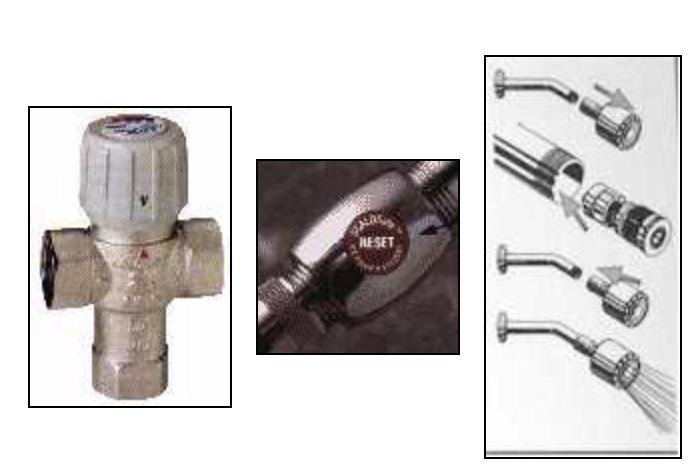Lots of scald protectors are available. They come in a variety of configurations. They close off the water flow if the water temperature becomes too hot.
Plumbing devices and scald protectors are crucial in ensuring safety in residential and commercial buildings by mitigating the risk of burns from excessively hot water. These devices are designed to either limit the maximum temperature of the water delivered to faucets or to completely shut off the flow of water if it exceeds a predetermined temperature threshold. The importance of these devices cannot be overstated, especially in environments with vulnerable populations such as children, the elderly, and those with certain disabilities who may not react quickly to sudden temperature changes.
One common type of device used for scald protection is a thermostatic mixing valve (TMV). TMVs blend hot and cold water to a safe temperature before it reaches the tap, and they can shut off the water flow if the cold water supply fails, preventing scalding hot water from being delivered. These valves are adjustable, allowing for the setting of maximum temperatures to cater to different safety requirements. Their use is widespread in healthcare facilities, schools, and senior living communities, where safety is of paramount importance.
Another innovative solution is the point-of-use anti-scald device, which is installed directly at the faucet or showerhead. These devices are designed to sense the temperature of the water flowing through them and to automatically reduce or shut off the flow of hot water when it exceeds a safe temperature level. This immediate response is crucial for preventing scald burns in situations where hot water temperature might spike suddenly, such as when a toilet is flushed, and the cold water pressure drops momentarily.
Pressure balance valves are also significant in preventing scalding by maintaining a constant water pressure balance between the hot and cold supplies. When a pressure discrepancy is detected due to a sudden demand on either the hot or cold water system, the valve adjusts the flow to keep the exit temperature within a safe range. This feature is particularly beneficial in preventing temperature spikes during showers, a common scenario for scalding accidents.
It’s worth noting that while these devices significantly enhance safety, their effectiveness depends on proper installation, regular maintenance, and calibration. Incorrect installation or neglect can lead to device failure, emphasizing the need for professional installation and periodic checks to ensure they function as intended.
In conclusion, plumbing devices and scald protectors are indispensable in modern plumbing systems, offering a proactive approach to preventing burn injuries related to hot water usage. Their integration into residential and commercial properties represents a commitment to safety and comfort, ensuring that water can be used confidently without the risk of scalding. As technology advances, we can anticipate further innovations in this area, potentially offering even more effective and user-friendly solutions for scald prevention.

Leave a Reply